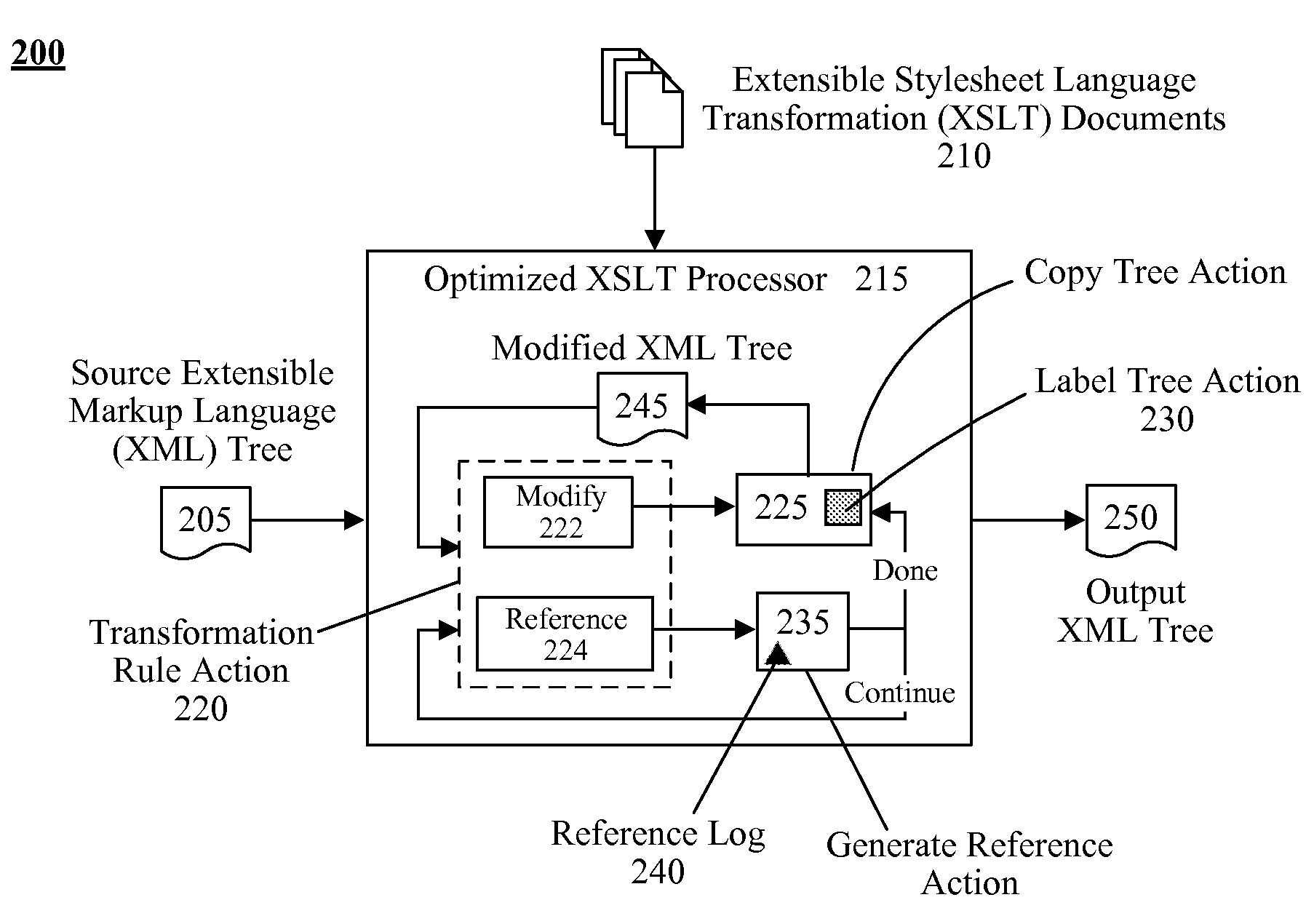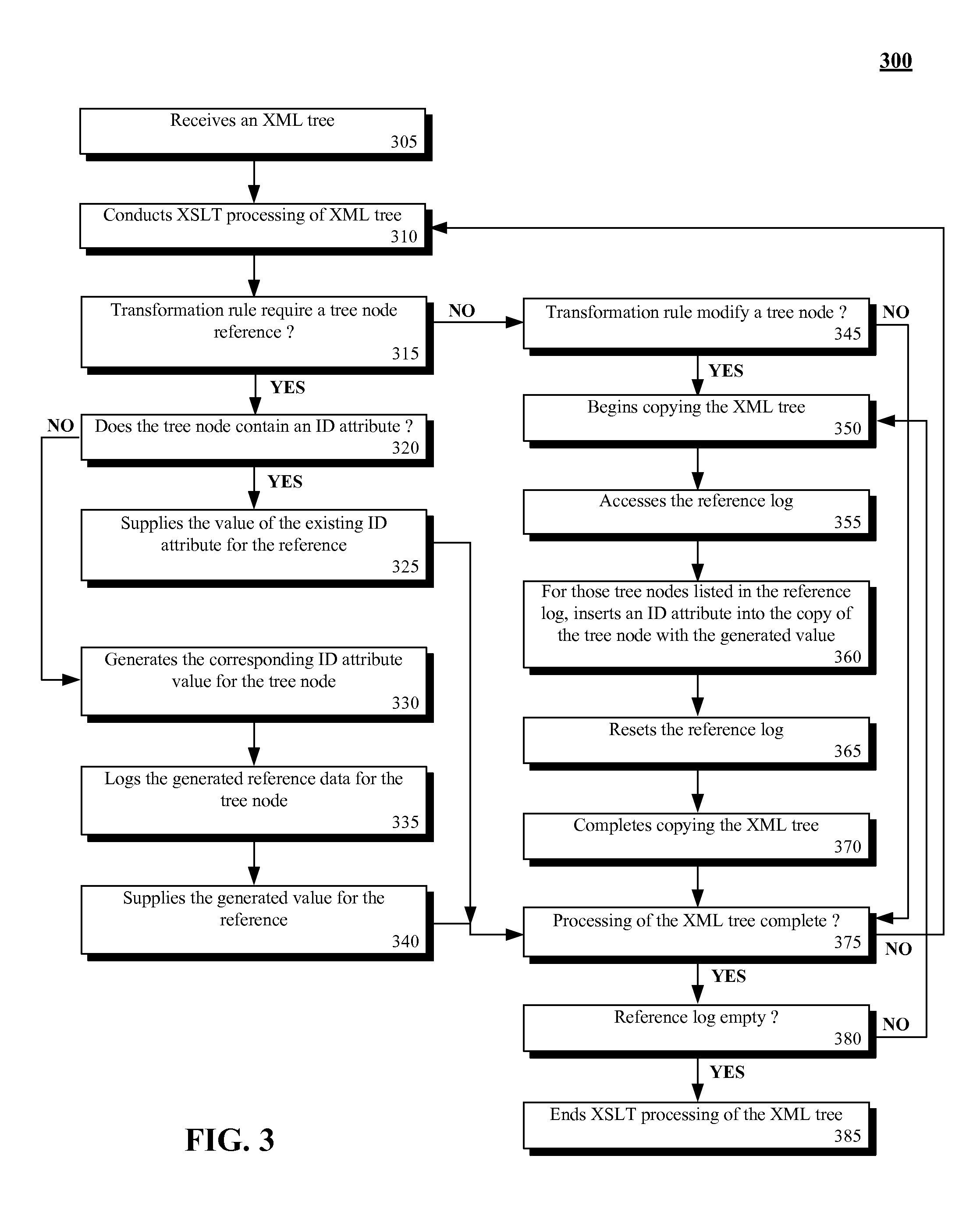Minimizing the copying of an extensible markup language (XML) tree when referencing tree nodes during extensible stylesheet language transformations (XSLT) processing
a markup language and tree technology, applied in the field of minimizing the copying of an xml tree, can solve the problems of inability to add an id annotation for a target element when needed, and inability to work well in a number of functional xml manipulation contexts, and achieve the effect of reducing the cost of computational resources
- Summary
- Abstract
- Description
- Claims
- Application Information
AI Technical Summary
Problems solved by technology
Method used
Image
Examples
Embodiment Construction
[0008]The present invention discloses a solution that minimizes copying and increases performance of Extensible Stylesheet Language Transformations (XSLT) operations via a specialized use of the generate-id( ) function. The generate-id( ) function is a function of the XSLT language that returns a unique node-id string for each element that can be used to name the element. The XSLT specification does not define the format of the string returned by generate-id( ), it merely states that every element within a document will have a distinct node-id value returned by generate-id( ) and that repeated inquiries on a given element will return the same value. There is no assumption that calling generate-id( ) on corresponding elements in different copies of a document will return the same or related node-ids. Conventional implementations of generate-id( ) function generate different node-ids for different copies of a document.
[0009]The present invention uses the node-id values returned by the...
PUM
 Login to View More
Login to View More Abstract
Description
Claims
Application Information
 Login to View More
Login to View More - R&D
- Intellectual Property
- Life Sciences
- Materials
- Tech Scout
- Unparalleled Data Quality
- Higher Quality Content
- 60% Fewer Hallucinations
Browse by: Latest US Patents, China's latest patents, Technical Efficacy Thesaurus, Application Domain, Technology Topic, Popular Technical Reports.
© 2025 PatSnap. All rights reserved.Legal|Privacy policy|Modern Slavery Act Transparency Statement|Sitemap|About US| Contact US: help@patsnap.com



